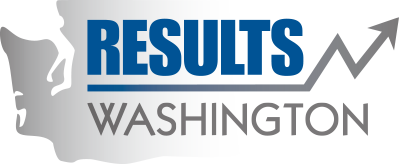Archived: Make New Water Supply Available for Agriculture
Water availability is the key to protecting a significant portion of Washington’s agricultural economy, including thousands of jobs and hundreds of millions of dollars in crops, agricultural products and other benefits.
Many of eastern Washington’s fertile farmlands depend on irrigation. They need a reliable water supply to remain highly productive, but current water resources can’t continue to fill the role. “New” water is needed to offset expected losses. For example, two large productive areas are poised to lose some or all of their current irrigation water supplies:
- In the Columbia River Basin’s Odessa Subarea , the aquifer that “temporarily” supported irrigated farmlands for decades is being depleted.
- In the Yakima River Basin, overall water demand is increasing and expected climate changes mean mountain snowpack can’t be relied on to feed the river year-round. During drought, there won’t be enough water in the river to meet all the needs of people, fish and crops.
Irrigated fields, orchards and vineyards generate more than farm jobs and food. They support livestock operations, food processing plants, local businesses, county infrastructure, schools and shipping companies. Whole communities largely depend on the farms in these areas continuing to be productive.
Water for irrigation also provides flexibility to adapt to changing markets and changing climates. Keeping farms economically viable means that farms can remain farms. Current and future generations can imagine a future in agriculture and benefit from it while meeting the needs of a growing population. (See also Results Washington, Goal 3, Goal Topic 4 – Working and Natural Lands.)
We’re making good progress. We are on track to be more than halfway to the goal by the end of 2017, with projects in six different areas providing 273,149 acre-ft of available water. Drill down for more info (https://data.results.wa.gov/reports/G2-3-1-d-Increase-Available-Water-Drilldown).
For water to be available, it has to be developed with water rights, plans and permits acquired; and made deliverable with infrastructure built to store or move the water. Water projects can be complex and include multiple parts and partners, including irrigation districts and the federal Bureau of Reclamation. Projects are completed in phases, and deliverable status lags behind development as infrastructure is built.
Most of the water available by 2017 will serve the Odessa Subarea of the Columbia Basin, where surface water will replace groundwater for irrigation of 90,000 acres in Grant, Lincoln, Adams, and Franklin counties. Development work has been completed and infrastructure improvements are underway to enlarge the southern half (about 55 miles) of the existing East Low Canal, allowing it to carry more water released from Lake Roosevelt.
The Odessa Subarea – Infrastructure - the East Low Canal project
- Current state funding will complete the widening of the canal currently underway by the East Columbia Basin Irrigation District, but new funding will be needed to construct three siphons to allow the “new” water to flow downstream of Lind Coulee.
- The Yakima River Basin –YBIP Initial Development Phase
- As of 2014, the state Department of Ecology has authority to implement the Yakima Basin Integrated Plan (YBIP), a co-operative plan to improve water management in Yakima, Kittitas and Benton counties. The plan considers agricultural, municipal and environmental needs together, and outlines multiple projects to meet them.
- Ecology is pursuing funding and approvals for projects to increase available water in the Kachess Reservoir to provide drought relief.
Stay informed. Participate. The Office of the Columbia River at the Department of Ecology is the state’s lead on this water supply work. Visit www.ecy.wa.gov/programs/wr/cwp/crwmp.html for more information and opportunities to share your ideas.
Also, projects like these can’t do the job they were meant to do if we take the water they provide for granted. Use water wisely. Visit www.ecy.wa.gov/programs/wr/ws/wtrcnsv.html for more on water conservation.
